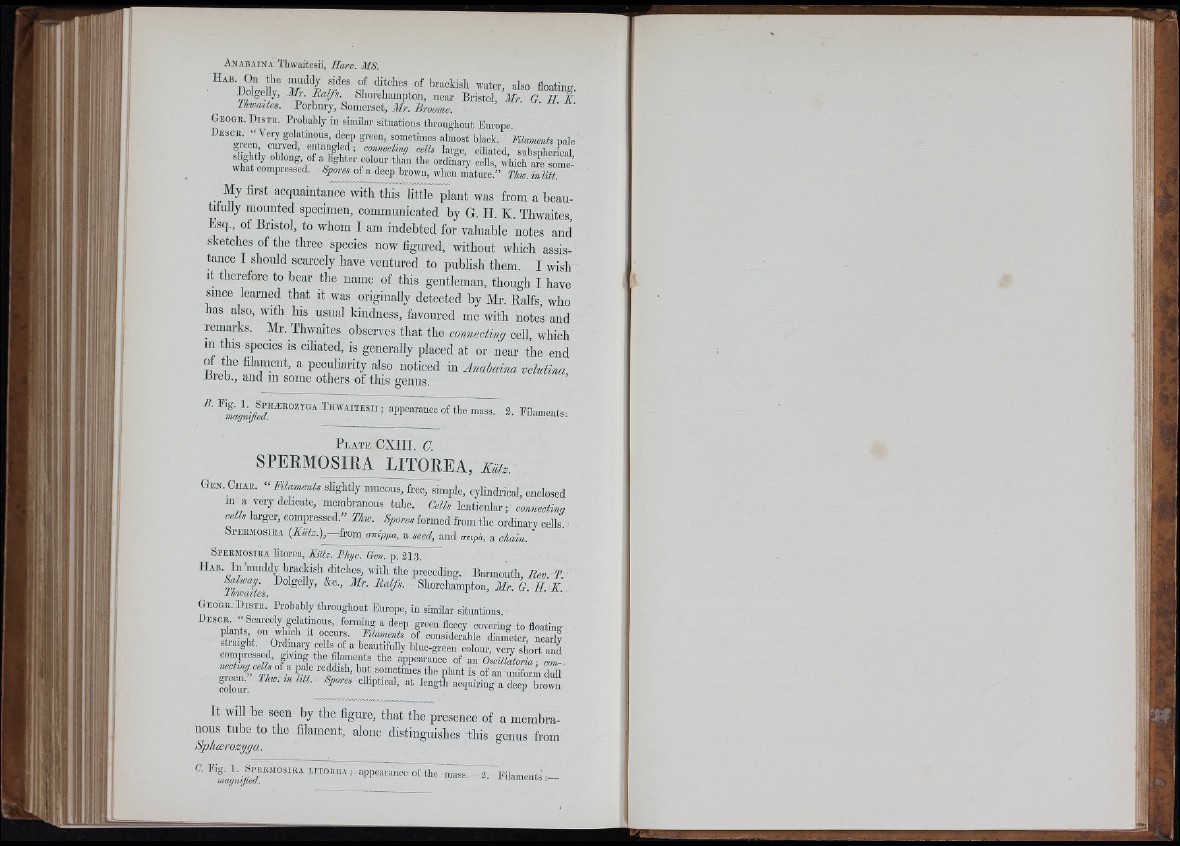
■ t i flo*iting.
TO ° V ’ y,' Wioreliamptoii, near Bristol, Mr. G I I K
Ihwaites. Porbury, Somerset, M r. Broome.
Geogr. Distr. Probably in similar situations throughout Europe.
Descr. “ Yery gelatinous, deep green, sometimes almost black. Mlaments nale
S sbtglhvtlyo hob7lo;n' ‘g’ , of a lighter colour than the ordinary cells, whicshn arrier sfoemaei)
what compressed. Spores o^itoieep brown, when mature.” Tim. inlitt.
My first acquaintance with this'Tittk^lant was from a beautifully
mounted specimen, communicated by G. H. K. Thwaites
Esq., of Bristol, to whom I am indebted for valuable notes and
sketches of tlie three species now figured, without which assistance
I shoidd scarcely have ventured to publish them. I wish
It therefore to bear the name of this gentleman, though I have
since learned that it was originally detected by Mr. Ralfs who
has also, with his usual kindness, favoured me with notes and
remarks. Mr. Thwaites observes tliat the connecting cell which
in this species is cdiated, is generally placed at or near the end
of the hlament, a peculiarity also noticed in Anahaina velutina
ureb., and m some others of this genus.
W “ ™ c e o f tliem a s s . 3. Filaments:
P l a t e CXIII. C.
SPERMOSIRA LITOREA, k ü h
Gen . C h a r . “ Mlaments sbgbtly mucous, free, simple, cylindrical, enclosed
lu a very dehcate, membranous tube. Cells len ticu la r; eonnectinq
cells lai-ger, compressed.” Thw. Spores formed from tbe ordinary ceUs
bPERMOsiBA [K ütz.),— ixom aMpga, a seed, and <r«p¿, a
Spermosira Ktorea, ATafe. Phyc. Gen. p. 213.
H a b . I n muddy brackish ditches, with tb e preceding. Barmouth, B e v . T.
^ m Z ite s S’lorehampton, M r. G. H . K .
Geogr. Distr. Probably throughout Evn-ope, in similar situations
Descr “ Scarcely gelatmous, forming a deep greeu fleecy covering to floating
plants on which it occurs. Pilaments of considerable diameter nearly
stiaight. Ordinary ceUs of a beautifully blue-green colour, very short and
the filaments the appearance of an Oscillatoria-, con-,
nectmg cells of a pale reddish, but sometimes the plant is of an uniform dull
It will be seen by tbe figure, that the presence of a membranous
tube to the filament, alone distinguishes this genus from
Spolioerozgga.
; appearance of the mass. 2." Filaments
111